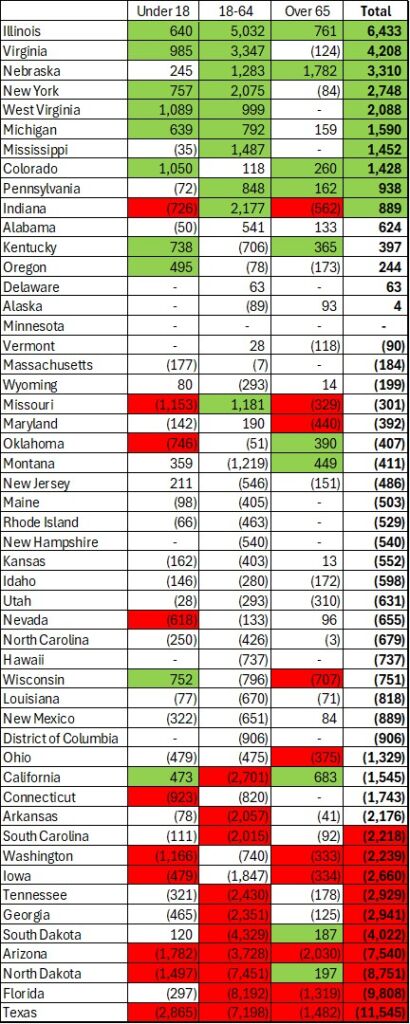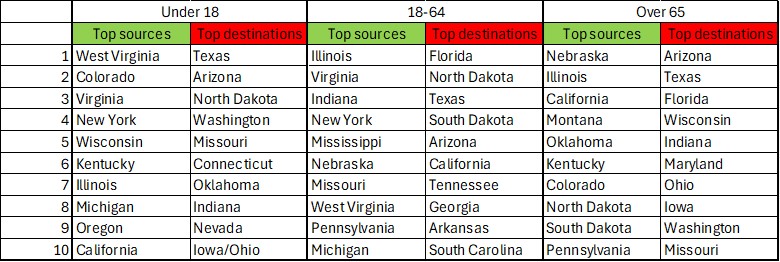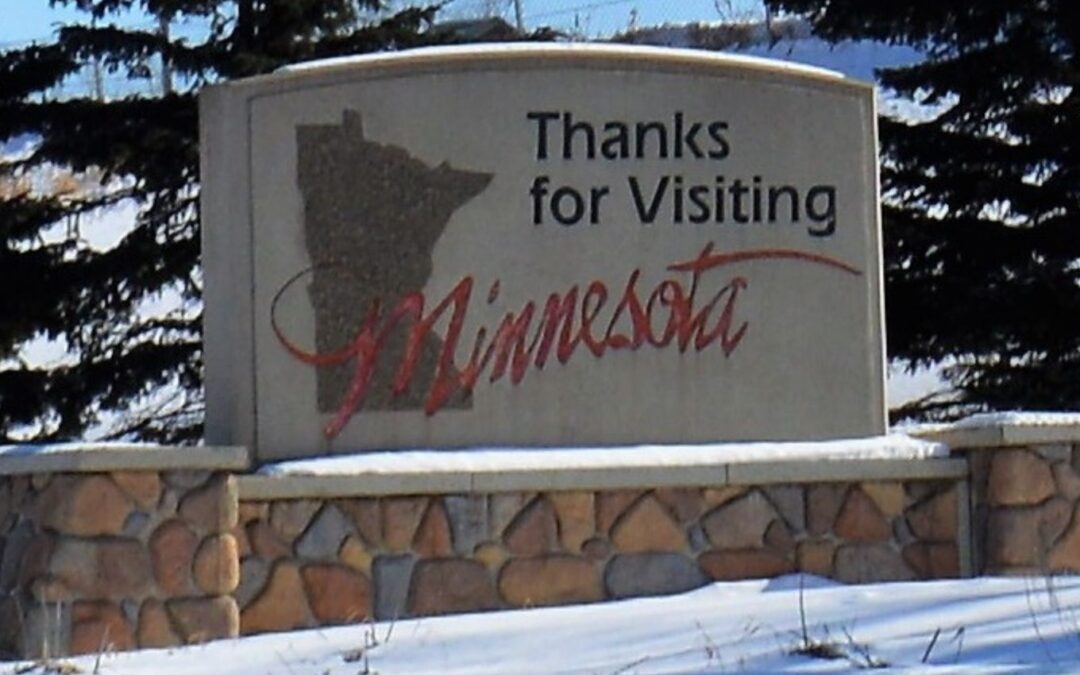Recently, I wrote about how, contra an article — since retracted — in the Star Tribune, migration data show that Minnesota is losing retirees as it is losing everyone else.
But this raises the questions: Where are these retirees going? Where are the ones coming in coming from? And, given that those aged over 65 account for just 8.0% of Minnesota’s net domestic outflow of residents of 46,288 in 2021 and 2022 while those aged 18 to 64 account for 77.5% of it, we have to ask the more important question: Where are these working aged Minnesotans fleeing to?
Domestic migration — sources and destinations
Returning to the Census Bureau’s American Community Survey, Table 1 shows the net flow of domestic migrants between Minnesota and each state and the District of Columbia in three age categories for 2021 and 2022 ordered by the total net flow. In each category, the top ten domestic sources of migrants are highlighted in green and the top ten destinations in red.
We see that, overall, the top ten sources of migrants into Minnesota from other parts of the United States were Indiana, Pennsylvania, Colorado, Mississippi, Michigan, West Virginia, New York, Nebraska, Virginia, and Illinois. The top ten destinations for Minnesotans leaving our state for other parts of the United States were South Carolina, Washington, Iowa, Tennessee, Georgia, South Dakota, Arizona, North Dakota, Florida, and Texas. Table 2 shows the top ten sources and destinations of/for domestic migrants for each age category.
Table 1: Minnesota’s net flow of domestic migrants, 2021 and 2022

Table 2: Top ten sources of/destinations for Minnesota’s domestic migrants by age category, 2021 and 2022

These two tables tell us that people of different ages move to and from different places. For example, Indiana is one of Minnesota’s top ten sources of domestic migrants under 18 and over 65 but one of the top ten destinations for working aged Minnesotans. This is repeated with Missouri but flipped with California. For the 51 working age Minnesotans who moved to Oklahoma, 390 Oklahomans aged over 65 moved to Minnesota, a ratio of 7.6.
There seem to be a couple of obvious policy lessons here. First, Minnesota’s loss of working age residents is much greater than its loss of retirees so ought to be the focus of state migration policy. Second, the policies required to attract working age residents are likely to be different to those required to attract retirees. We need to look behind those headline migration numbers and investigate what policy levers can be deployed to attract different groups. Watch this space.

